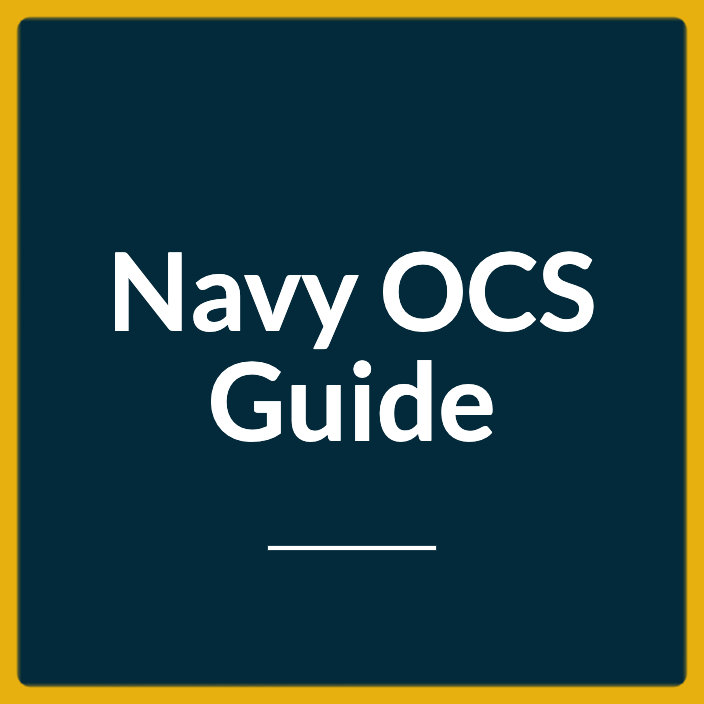Last Updated on March 4, 2024
This guide provides information that will help with obtaining financial assistance through the Navy Baccalaureate Degree Completion Program during Fiscal Year 2024.
If you are a competitive student looking for a way to earn full pay and benefits while in college, consider this program carefully.
This program not only pays you to attend college, but it also guarantees a commission in the United States Navy as a Naval Officer.
The information provided in this guide is current as of August 2022, per the Navy Personnel Command. No update has been issued so far.
Let us jump right in.
Definition and Background
The Baccalaureate Degree Completion Program (BDCP) is a collegiate program that provides a financial incentive for college students to successfully complete their baccalaureate degree requirements and get a commission as an Unrestricted Line (URL) Officer in selected communities or Restricted Line Officer in selected Information Warfare communities after completing Officer Candidate School (OCS).

Selection boards for the BDCP will be held concurrently with selection boards for officer community professional recommendations.
This pilot program will be examined no later than February 2024 to make a recommendation to either renew, alter, or sunset.
Selection Board for 2024
The BDCP boards will meet with professional recommendation boards to choose highly qualified applicants to attend Navy OCS and Navy ODS for fiscal years 2024 and beyond.
Applications will be accepted for the URL designators listed below:
- Aviation: Pilot and Naval Flight Officer
- Special Warfare: SEAL Officer
- Special Operations: Navy EOD Officer
- Surface Warfare Officer
- Intelligence Officer
- Oceanography Officer
- Cryptologic Warfare Officer
- Information Professional
- Cyber Warfare Engineering Officer
In their submission, applicants may only request consideration for one community.
To fully understand the unique timing of their selection process, interested SEAL officer candidates can contact the SEAL Officer Community Manager (OCM) (OPNAV N137).
Submarines (Nuclear) or Surface Warfare Officer (SWO(N)) aspirants should apply for the Nuclear Power Officer Candidate (NUPOC) program.
Selection Process
Applicants who meet the qualifications may request consideration for one of the following officer communities (subject to quota limitations): CW, CWE, EOD, IP, Intel, Naval Aviation, OCEANO, SPECWAR, or SWO.
In their application, applicants may only request one community. Note: Applicants interested in Submarines or SWO(N) should apply for NUPOC in accordance with PA 100A.
Applicants interested in SPECWAR must apply in accordance with PA 100D.
The professional recommendation board shall make the decision in accordance with OPNAVINST 1120.13B, with applications submitted in the same manner as PAs 100, 100D, 100E, 106, 108A, 108B, 108C, 108D, and 121.
Candidates for the BDCP CWE must also go through an unique community technical screening and interview panel, as specified in PA 121.
The CNRC will work with the Head Officer Community Management Office (BUPERS-31) to arrange BDCP selection boards, with the goal of having them in conjunction with direct accession professional recommendation boards, or more frequently as required by the individual communities.
CNRC will notify professionally suggested individuals and continue the enlisting process.
No waivers are authorized for this program.
Application Sources
The Navy BDCP is available to civilians, enlisted personnel in the Navy Reserve (Active or Inactive Reserve), and enlisted personnel in other Armed Services’ Reserve Components (Inactive).
Prior to admittance into the BDCP, Inactive Reserve personnel from other components must be dismissed or relieved from their military commitment.
Midshipmen in the Navy Reserve Officer Training Corps (NROTC) who have received pay entitlements, subsistence allowances, tuition, or fees are ineligible to apply.
Program Benefits

Candidates for the BDCP will receive full salary and benefits (excluding clothes) at the rate of Officer Candidate Petty Officer Third Class (OCPO3) (E-4), but will be responsible for tuition, books, and other school-related expenditures.
If not already advanced, applicants will be advanced to Officer Candidate Second Class Petty Officer (OCPO2) (E-5) upon fulfillment of bachelor’s degree requirements and will continue to earn pay at that pay grade while awaiting enrollment in the next available OCS class.
Members can earn meritorious advancement in two ways:
- Members who have made the dean’s list for two consecutive semesters or three consecutive quarters. Following completion of 30 semester hours or 45 quarter hours, candidates are entitled for a one-time advancement to the next higher paygrade (maximum E-6) beginning on the first of the month.
- Any BDCP candidate who refers someone to an officer commissioning program (candidate or direct commission) will be eligible for a one-time promotion to the next higher paygrade (maximum E-6).
Both options will allow for a maximum of two meritorious advancements while in the program: one for academic achievements and one for a recommendation leading to admission.
If not already advanced, candidates will be advanced to Officer Candidate Second Class Petty Officer (OCPO2) (E-5) upon completion of bachelor degree requirements and will continue to earn pay at that pay grade while awaiting enrollment in the next available OCS or ODS class.
Eligibility Requirements
Citizenship
All applicants must be United States citizens.
Gender
The Navy BDCP has no gender restrictions. This program is open to both men and women.
Age
Applicants must be at least 19 years of age and within the required age restrictions as set forth in each community’s program authorization (PA).
Aptitude
Applicants must pass designator-specific testing (such as the Aviation Selection Test Battery or ASTB, Officer Aptitude Rating or OAR, and Physical Screening Test or PST) under the PA for which they are applying.
Waivers will not be accepted.
Physical
Applicants must achieve the pre-commissioning/accession physical criteria outlined in Chapter 15, Manual of the Medical Department, as well as any extra requirements imposed by the PA for the specific designator for which they have applied.
Education
This program does not need applicants to hold a baccalaureate degree.
Applicants must be presently enrolled or accepted for transfer to a regionally qualified four-year institution or university that does not have an established Naval Reserve Officer Training Corps (NROTC) unit or cross-town arrangement with the NROTC.
Prior to enlisting, they must also have an approved degree completion plan to calculate the predicted graduation date.
Applicants must have earned at least 60 semester or 90 quarter hours of college or university credit to qualify for this program.
Those who have already completed a qualifying undergraduate degree should apply in accordance to the specific PA of the community of their choice.
Applicants must have at least a 2.8 cumulative grade point average (GPA) on a 4.0 scale. There will be no exemptions granted for grades below 2.8.
There are no limits to allowable college majors for SWO, EOD, and SPECWAR.
However, majors in science, technology, engineering, and mathematics, as well as studies with a direct relevance to a naval career, will be given special attention by the professional recommendation board.
Major subjects of study in international relations with a regional focus (e.g., Middle East or Asian studies), political science, history, or science, technology, engineering, and mathematics are desirable but not essential for INTEL.
Major subjects of study directly related to science, meteorology, oceanographic, mathematics, physics, and engineering are desirable but not essential for OCEANO.
Major subjects of study directly related to science, technology, engineering, and mathematics are desirable but not needed for CW.
Major subjects of study in information systems, cybersecurity, computer science, computer engineering, electrical engineering, operations research/applied statistics, or other science, technology, engineering, and mathematics (STEM) fields are encouraged but not essential for IP.
Degrees in computer science and computer engineering are greatly encouraged for CWE; additional technical majors, including but not limited to cyber operations, mathematics, information systems, software engineering, and other computer related disciplines, will be accepted on a case-by-case basis.
Candidates for the BDCP must finish college as full-time students, attending at least all regular school sessions (two semesters or three quarters or higher if required by the specific designator PA).
Upon conclusion of each school term, official transcripts must be submitted to the Commander, Navy Recruiting Command (CNRC).
Selectees will be dis-enrolled if they cannot provide complete academic transcripts or if there is any proof of transcript manipulation.
A BDCP applicant may be withdrawn from the program and separated from the Navy by CNRC if they cannot maintain a cumulative 2.8 GPA (on a 4.0 scale) or less than a 2.0 GPA (on a 4.0 scale) in STEM courses, based on review and recommendation from the corresponding OCM.
Participation in a non-mandatory co-op or work-study program is permitted unless it causes a delay in the estimated graduation date.
The prerequisites for a baccalaureate degree must be completed within 24 months. Prior to enrollment, selectees must have an approved degree completion plan to estimate their predicted graduation date.
Without the express permission of CNRC, BDCP applicants cannot extend their estimated graduation date, stop attending classes, change majors, take part in exchange programs, or transfer institutions.
Failure to get authorization may cause expulsion from the program.
Upon BDCP Selection
To get military pay and financial incentives for joining the program, BDCP selectees will be obliged to enlist.
Selectees will then be sent to the closest Navy Talent Acquisition Group (NTAG) after enlisting.
Candidates for the BDCP will receive full salary and benefits (excluding clothes) at the rate of Officer Candidate Petty Officer Third Class (OCPO3) (E-4), but will be responsible for tuition, books, and other school-related expenditures.
Members can earn meritorious promotion in two ways:
- Members who have made the dean’s list for two semesters or three quarters in a row. Following completion of 30 semester hours or 45 quarter hours, candidates are entitled for a one-time advancement to the next higher paygrade (maximum E-6) beginning on the first day of the month.
- Any BDCP candidate who refers someone to an officer commissioning program (candidate or direct commission) will be eligible for a one-time promotion to the next higher paygrade (maximum E-6).
Each opportunity will allow for a maximum of two meritorious advancements while enrolled in the program: one for academic achievements while enrolled in the program and one for a reference leading to admission.
If not already advanced, candidates will be advanced to Officer Candidate Second Class Petty Officer (OCPO2) (E-5) upon completion of bachelor degree requirements and will continue to earn pay at that pay grade while awaiting enrollment in the next available OCS or ODS class.
Also Read: Navy OCS Guide for Officer Applicants
Enlistment
Applicants that are chosen will be processed for enlistment in the Navy Reserve.
Candidates will be sent to the Navy Talent Acquisition Group (NTAG) closest to their college.
Candidates for the BDCP will be placed in a reserve, non-IRR status as an OCPO3 (E-4) or, if already in the reserve component, will keep their present paygrade if higher while staying in a reserve, non-IRR status.
All BDCP applicants, with the exception of Cyber Warfare Engineer, will be promoted to OCPO2 (E-5) if they are not already an OCPO2 (E-5) or OCPO1 (E-6). They will inherit all rights and duties. After graduation, CWE BDCP applicants will be commissioned.
The NTAG will be in charge of managing and administering BDCP candidates during indoctrination, physical readiness testing, common access card registration and issue, pay, urinalysis, and any other administrative procedures until they report to OCS or ODS.
Indoctrination Training
Members will be allocated to the next available OCS or ODS class after completing a baccalaureate degree.
Except for CWE, all BDCP choices will attend OCS in Newport, RI. Officers will undertake designator-specific training after being commissioned from OCS.
Candidates for CWE will attend ODS in Newport, RI.
More Information
Applicants interested in applying for the BDCP or learning more about the board’s convening dates and deadlines should contact their local Navy Officer Recruiter or command career counselor (if a member is in the Navy Reserve).
In addition, queries can be directed to the BDCP Program Manager, LCDR James Barfoot, Branch Head, General Officer Accessions (CNRC N311), via phone at (901) 874-9419 or by email at james.e.barfoot.mil(@)us.navy.mil.
If you have questions about the SEAL program, please contact the SEAL OCM (OPNAV N137) at (703) 604-5005 or via email at SEAL_OCM(@)navy.mil.
Hope you find this useful in your career and educational planning.


